What are the benefits of the bullpup? Find out if this remarkable rifle can change the editor’s opinion of bullpups as he puts it to the test on the shooting range
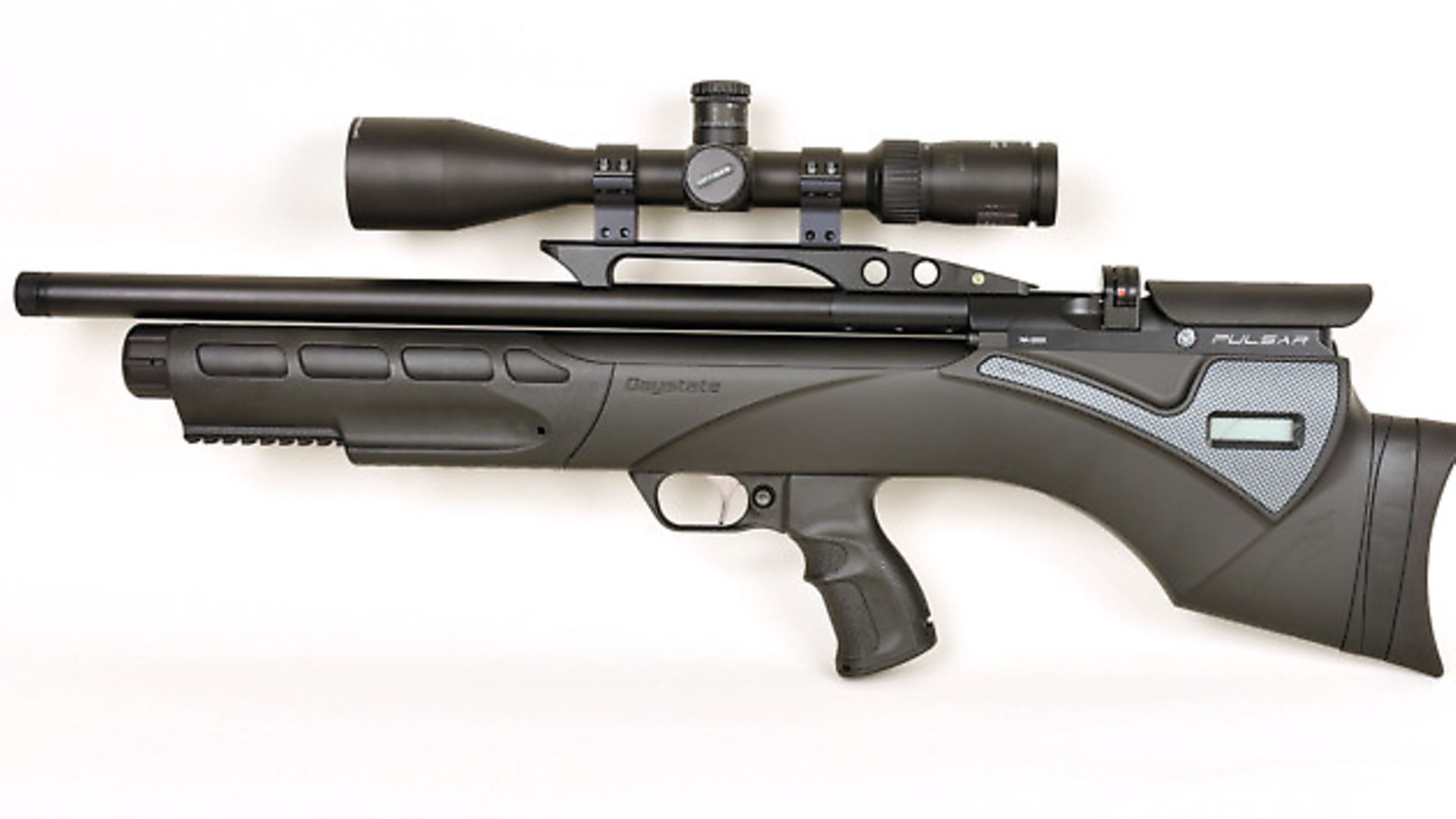 credit: Archant
credit: Archant
Bullpups are big fashion at the moment, with every major manufacturer adding them to their range, except BSA. I’ll put my cards on the table up front and say that they didn’t appeal to me at all. I understand the list of perceived benefits including their short length, but I don’t remember having trouble with guns that were too long. Apart from their Marmite looks, I simply don’t get the handling. I like a rifle that slips into my shoulder and is on aim as my cheek hits the comb, and there’s no better example of that than Daystate’s own Huntsman Regal. This rifle is the best handling airgun I’ve ever owned. It seems to know where I want to aim and takes itself there. I also own a Daystate Mk4, albeit in a Mk3 stock. The reason for the change of timber is because it handles better. This is a high-power version that’s been my everyday hunting gun for close to five years, so I know it like the back of my hand.
I told Daystate’s Marketing Director my thoughts and the words in his response that I am able to print went along the lines of, ‘You’re missing the point. Get off your arse, get out in the field and find out what the Pulsar can do for your shooting.’ Ooops! That didn’t go well. I thought that I’d better do as I was told, then.
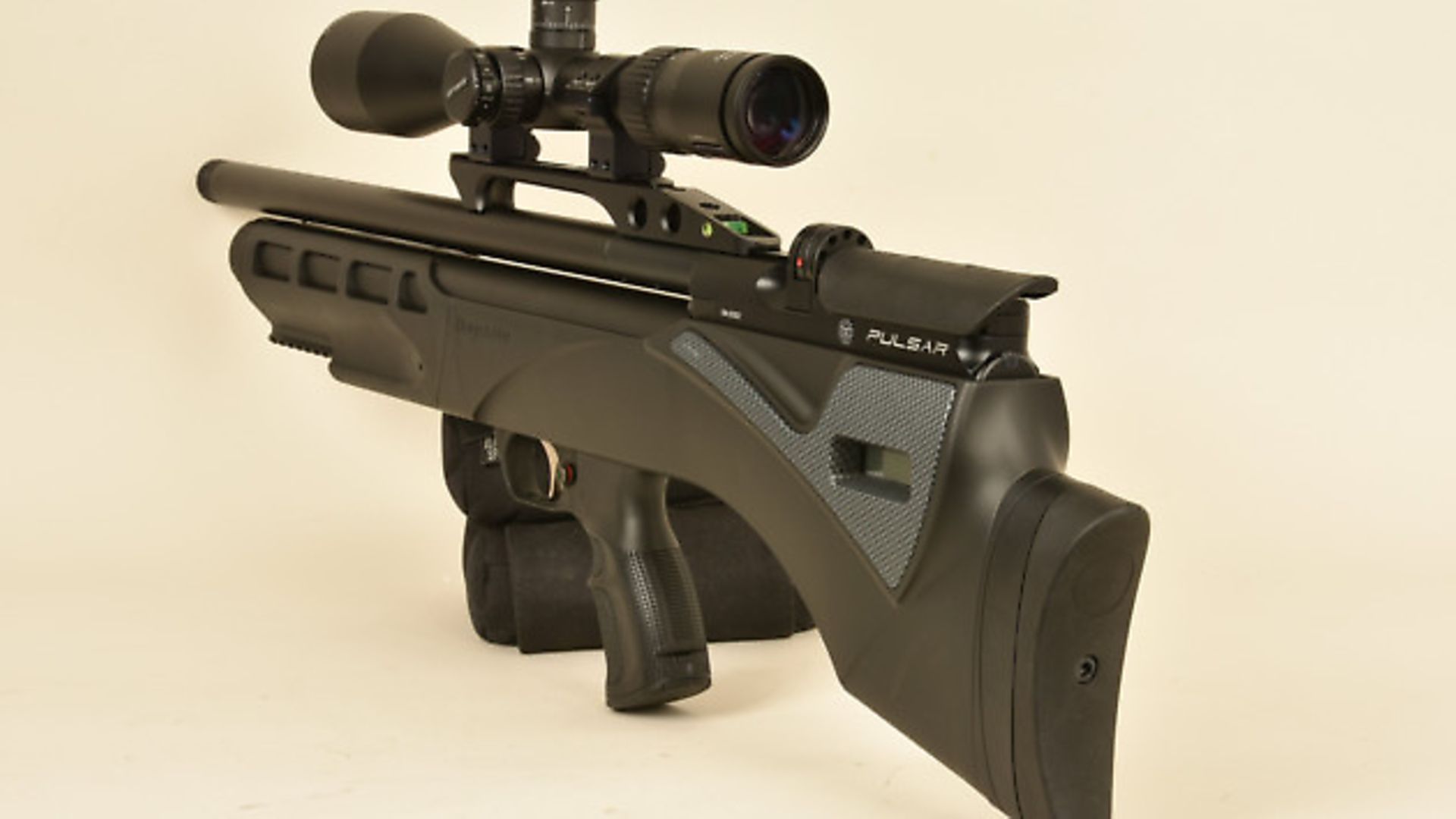 credit: Archant
credit: Archant
Legacy
In some respects, the Pulsar is the successor to my trusty Mk4 because it uses an electronic firing system programmable to suit your needs. In the left cheek piece is a small LCD screen that tells you current reservoir pressure and the other information you need for programming. Power is supplied by six common or garden AA batteries, which provide enough juice for 14,000 shots. The screen warns you when there are 1000 shots left, which should be enough time for even the laziest shooter to fit some new cells. I really like the idea of standard batteries so that you can change them at any time, simply by removing one stock bolt.
An electronic action offers a huge advantage to the bullpup design in that you can place the trigger anywhere you like and simply run wires back to the motherboard. Triggers that need a direct mechanical linkage can have their problems, so this solution makes perfect sense. The pistol grip of the Pulsar is actually an aftermarket upgrade for a Kalashnikov AK47, which the design team felt met their needs. It fills the hand well and is ambidextrous, as is the rest of the rifle. It’s not easy to see, but the synthetic cheek piece and metal side lever can be swapped from side to side with some basic tools in just a few minutes, so lefties are fully catered for.
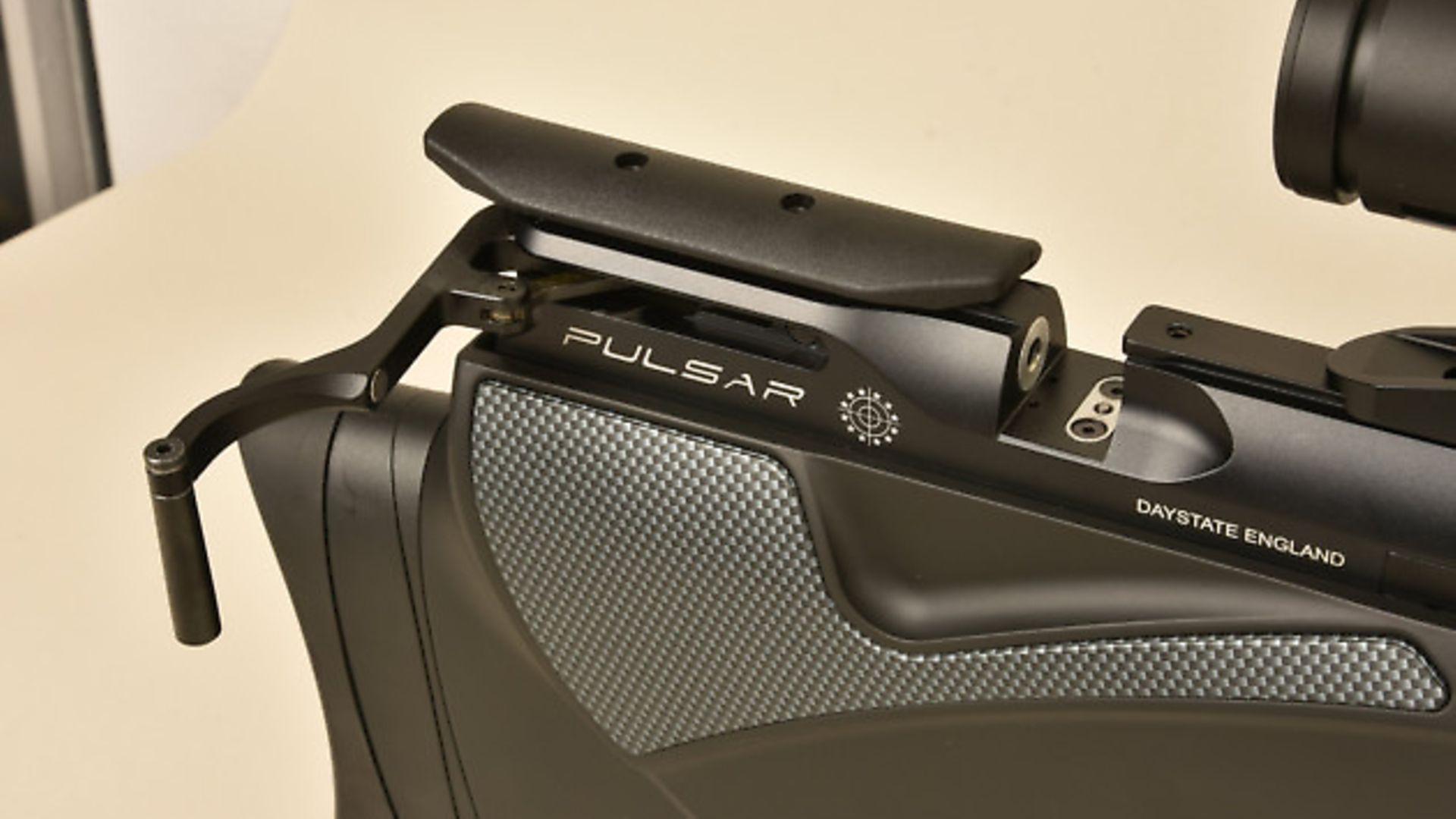 credit: Archant
credit: Archant
Up front, the large diameter, aluminium reservoir is filled through an industry standard Forster fitting that I like very much. They’re simple and strong, and most filling hoses have the female part as standard so you needn’t worry about forgetting an adaptor. I was pleased to see that the metal cover for this screws on. The one on my Mk4 is held on by the friction of an ‘O’ ring and I’ve come close to losing it several times. The large reservoir and frugal Harper firing valve means that we’ll get 250 shots .177, and 300 shots .22. Think about that; that’s half a tin of pellets out of one 200bar fill, from a gun that’s just 30” long! Whatever else you think, you have to admit that there’s some clever engineering going on here.
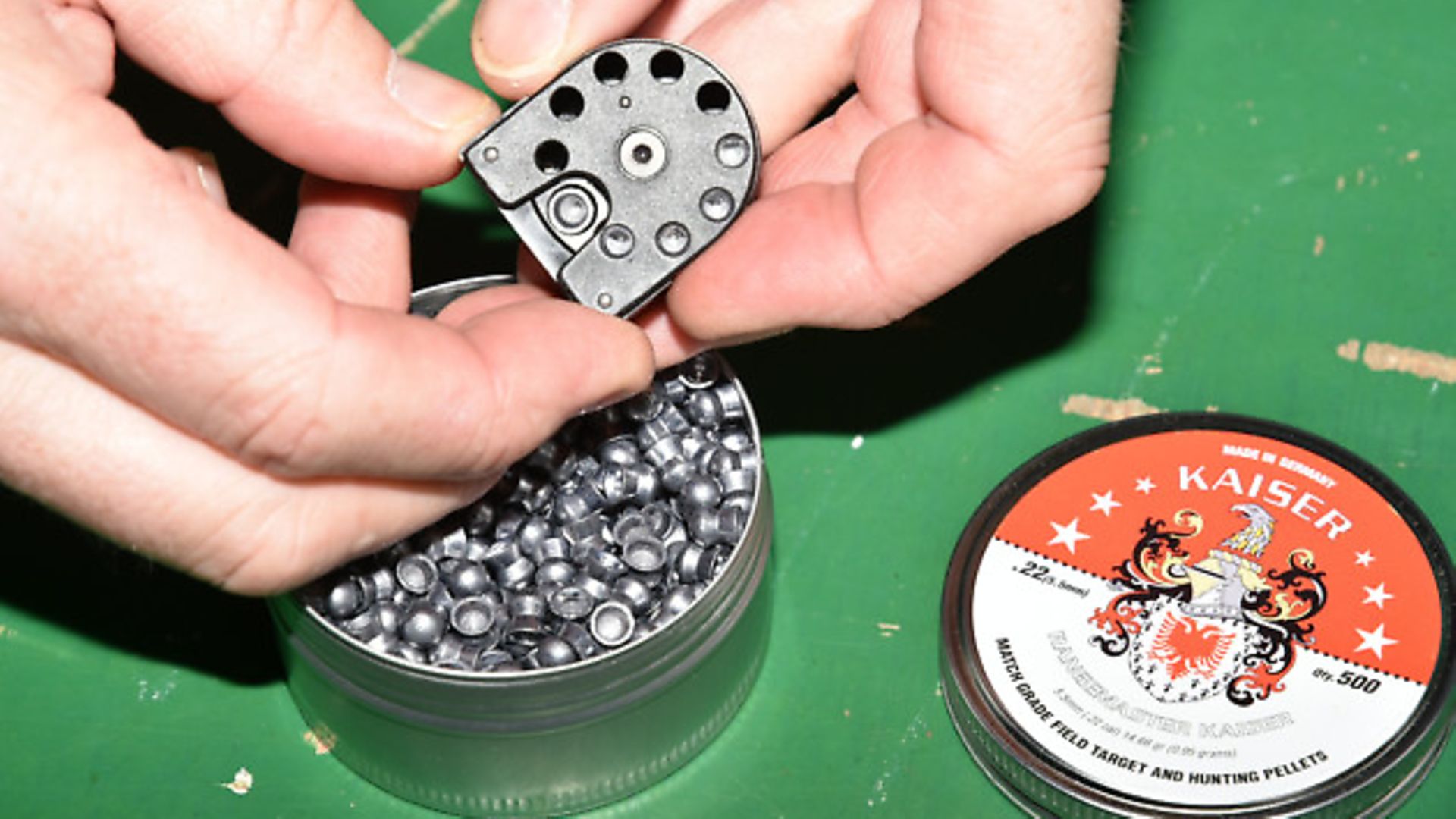 credit: Archant
credit: Archant
Power and performance
Over the chronograph it varied no more than 10 fps shot-to-shot over 100 pellets straight from the tin. I used Daystate’s new Kaiser .22 which weighs 14.66 grains. At the muzzle, they averaged 587fps, which equates to 11.2 ft.lbs. My first stop when trying to get a feeling for the Pulsar was to drop in at my gun club where I can shoot out to 55 yards from a covered area that has plenty of benches and chairs. This allows me to test the rifle, not my skills. As seems to be the norm for my visits, there was an inconsistent wind that went from almost still to howling, so reading it was vital.
I zeroed the Pulsar in minutes and steadily worked my way down the range from one target to the next. This was my ‘back of a fag packet’ way of learning the trajectory and how it related to the complex reticle of the pre-production Optisan scope that Daystate had fitted. Before long, I was connecting with the 55-yard targets with some consistency, wind accepted. There are lots of oaks on our range and my club mates were lining up acorns downrange where they made tricky yet satisfying targets as they exploded on impact. At one point, I hit three with the same number of shots at 55 yards, so that I knew there was nothing more to be asked about the rifle’s accuracy.
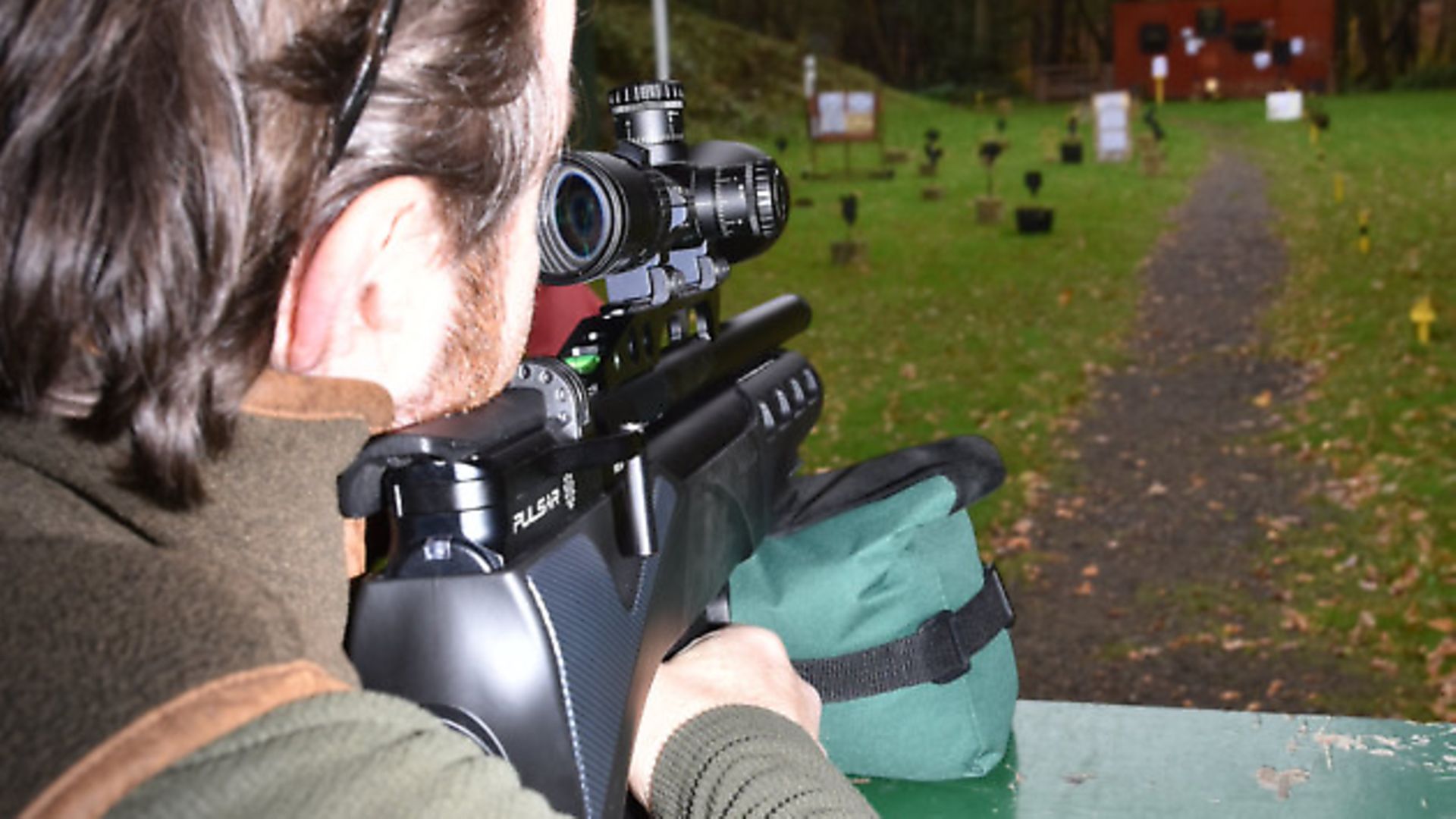 credit: Archant
credit: Archant
When our sister magazine had a .177 Pulsar in for review some time ago, I had the chance to take a few shots with it on the same range, and I noticed something interesting. I was surprised at just how many pellets I could see in flight. What’s even more interesting to me is that I noticed exactly the same thing with the .22 synthetic. This set me thinking about why that should be. I’ve heard a theory that when a gun is totally still on firing, the image through the scope is perfect and therefore our eye is better able to see the pellet’s trajectory.
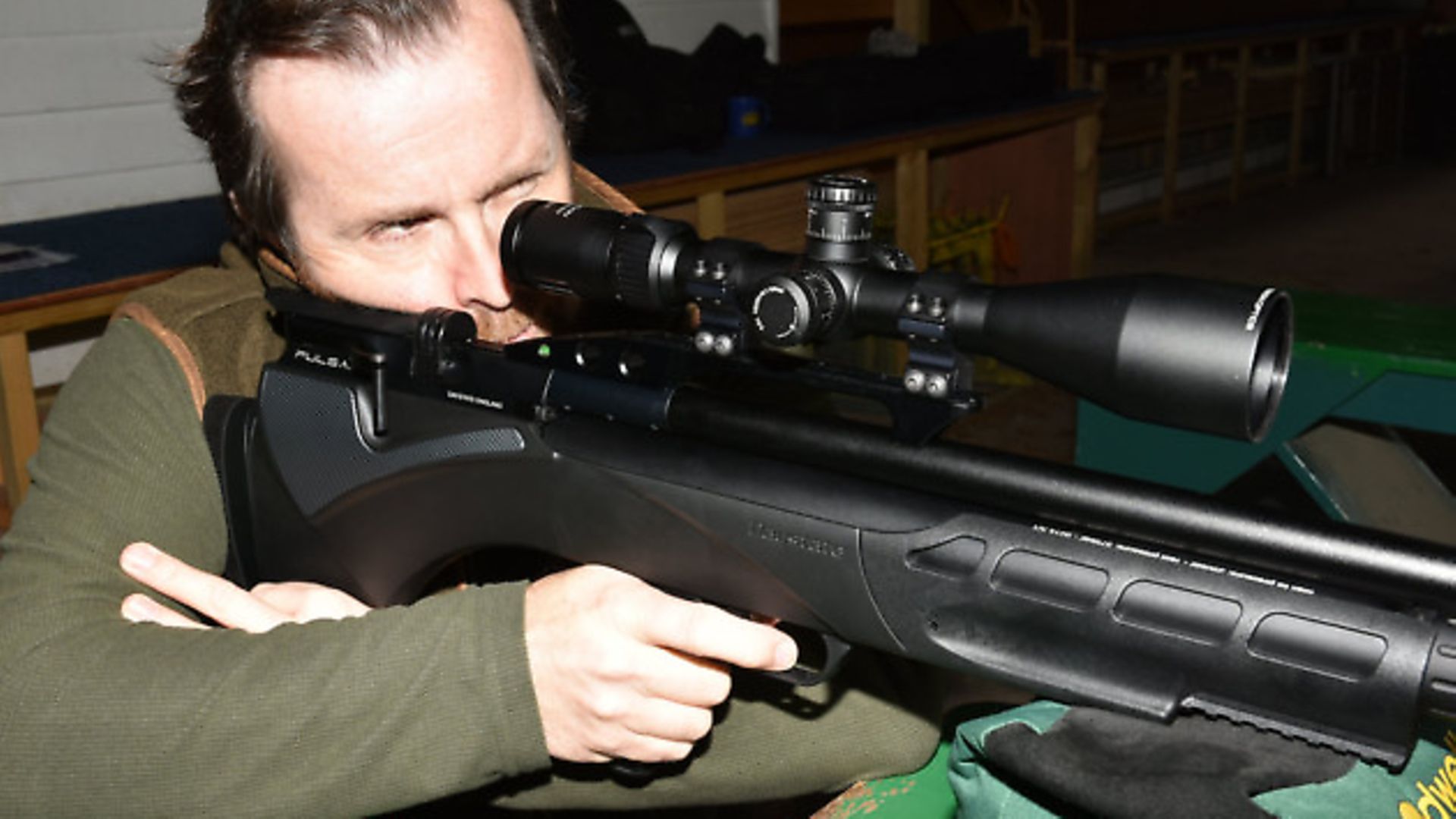 credit: Archant
credit: Archant
Hunting gun
Shooting from a stable bench, off heavy sandbags, is the perfect test of a rifle/scope/pellet combination, but it’s highly artificial. I’m a hunter through and through, so I wanted to get the Pulsar into the field. I’m a big fan of synthetic stocks because in the rough and tumble world of hunting, rain, mud and blood are just hard facts of life and I like a gun that’s designed around that truth. One of best features of my Mk4 is the rust-proof finish on all the metal components, and I have my stock ‘wrapped’ in vinyl camo, so that I can just wipe off corrosive elements and put it away. I don’t have to worry and stress that I might damage polished bluing. Now, I love a pretty gun as much as the next chap, but hunting guns are tools, not pieces of art, in my world. You can order your Pulsar with a handsome, laminated wood stock, or even a fancy walnut one, but the black synthetic would be my choice every time.
Every bullpup faces a challenge; because your face is on top of the action, the scope needs to be elevated to a height where you can see comfortably through its axis. I have a huge head and a wide face to match, so I often find it difficult to see through a bullpup’s scope unless it’s mounted very high, and the scope on test sat 2¾” above the centre line of the bore, a full inch higher than the typical PCP. At long range this has little effect, but for close-range shots you need to know the trajectory. With an optimised trajectory zeroed at 32 yards, our .22 Kaiser will be no more than ½” above or below the sight line from 11 to 36 yards. It becomes tricky at 10 yards, when it will be ¾” low, so you’d have to aim ¾” high. I’ve shot lots of rats and feral pigeons at that range or even closer, and it always feels odd to aim high when you’re so close to the target. This isn’t unique to the Pulsar; it’s just a bullpup trait.
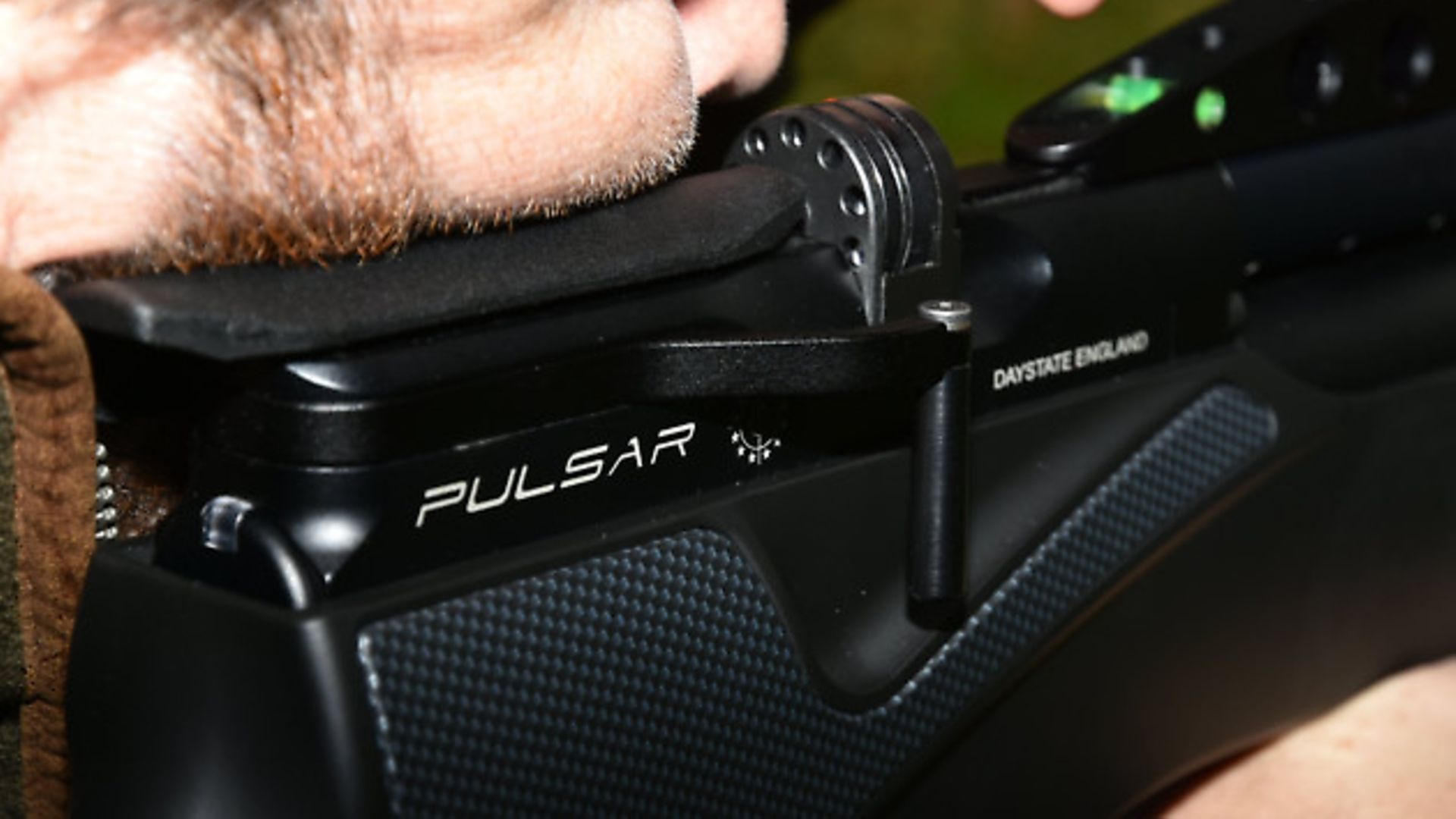 credit: Archant
credit: Archant
Laser rangefinding
Some years ago, I was working on the problem of rangefinding when a pal and I developed the use of a laser. The idea is, you mount it so that it intersects your cross hairs at your zero, so any distance closer or farther shows up in your scope; we learned that mounting it low made it less vulnerable to damage and increased the separation between it and the scope. Daystate have taken this idea into production by mounting the laser inside the stock at a great distance from the scope’s axis, making rangefinding very sensitive. I’ll take all the credit for getting them to employ this method, and they’ll laugh at the suggestion. For me, it’s one of the greatest technical improvements to accurate shooting I can think of, and I’m so happy to see a production gun with it installed. You have to use it in the field to fully understand, but trust me, you’ll bag more quarry using this method. I guarantee it.
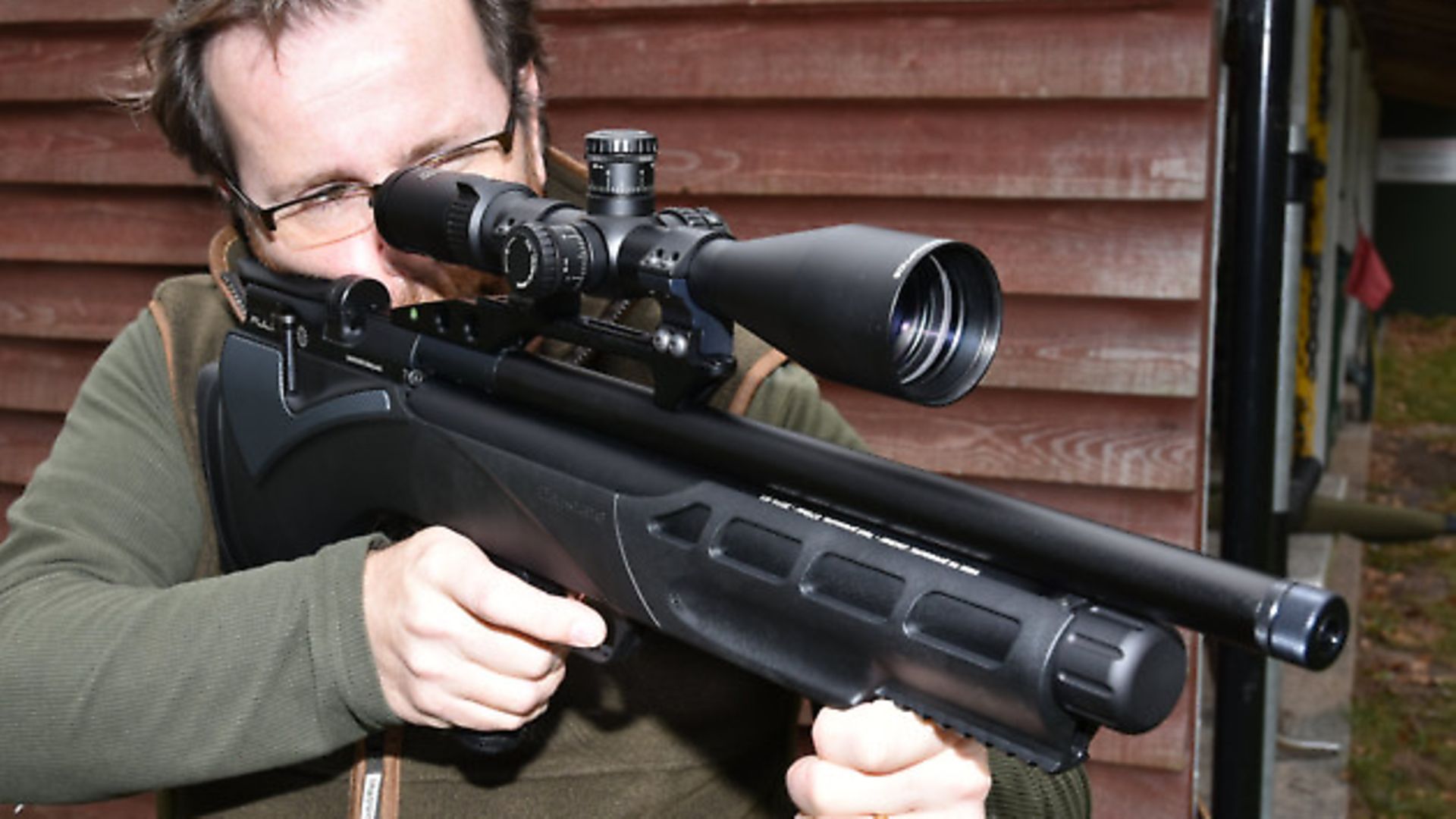 credit: Archant
credit: Archant
This is just one of the reasons that I believe the Pulsar is the most technologically advanced rifle on sale today, but there are other features that make a difference to the hunter in the real world. Take the redesigned loading system that the Pulsar inherits from the Wolverine: Firstly, it cannot fire unless the side lever is fully closed, so no more high-pressure air blowing back in your face as the pellet lands short. Next, it cannot double load. The magazine is indexed by a little piston that’s activated by the air pressure of a shot. If it hasn’t fired, it hasn’t indexed - simple, and yet so important to the hunter. These are guns made by hunters and I applaud them for taking airgun design forward so cleverly.
I’ll confess that having spent time with this rifle I’ve softened my anti-bullpup position. It’s a remarkable rifle in many ways that brings real-world technical advancement to the hunting field. The handling is always going to be a ‘love it or loathe it’ situation and I implore anybody seriously thinking about buying it to handle one on the range. My club mates’ opinions are divided, as are our readers’, but those who like bullpups love the Pulsar, and they’re selling like hot cakes to prove it.
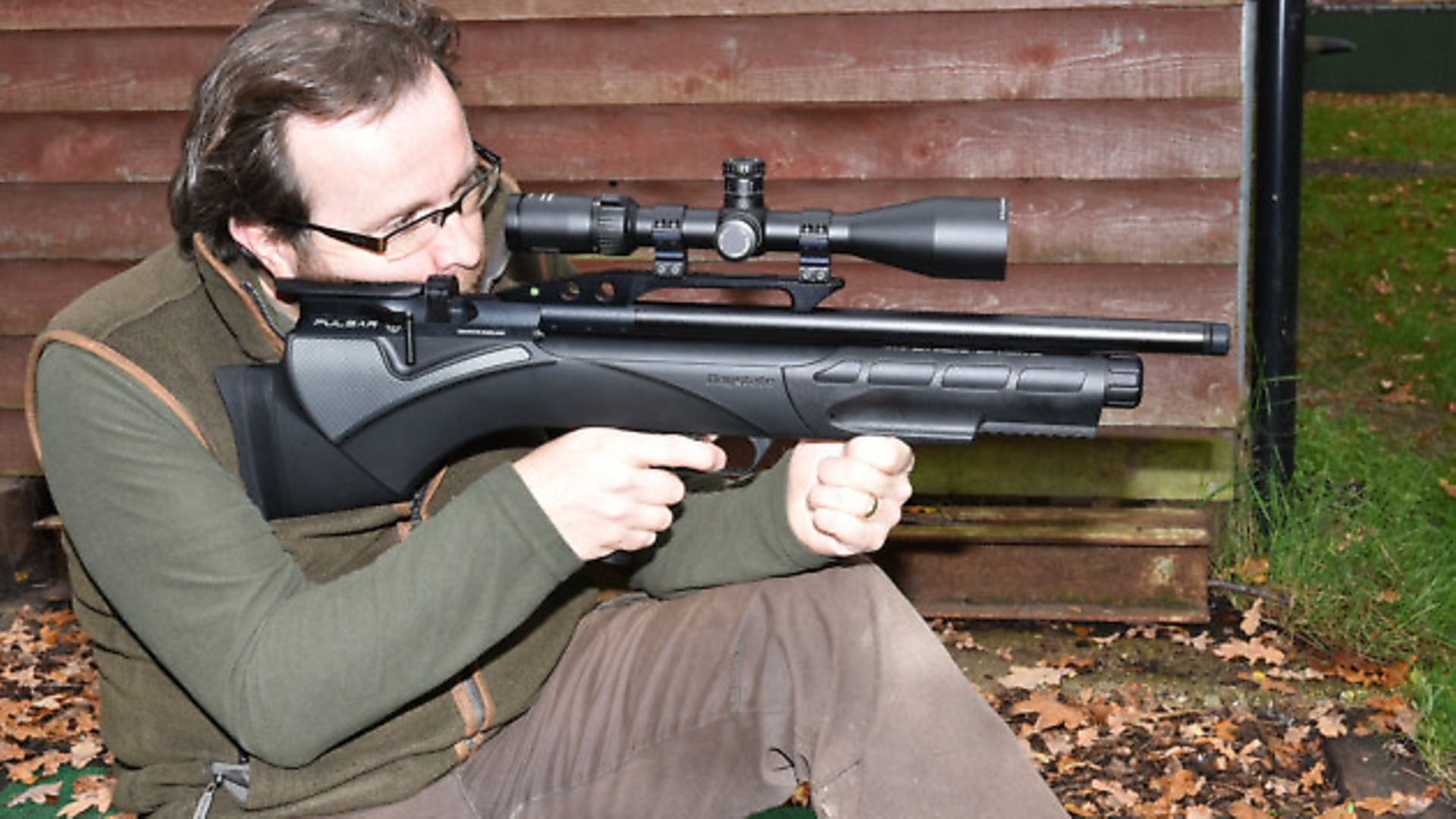 credit: Archant
credit: Archant
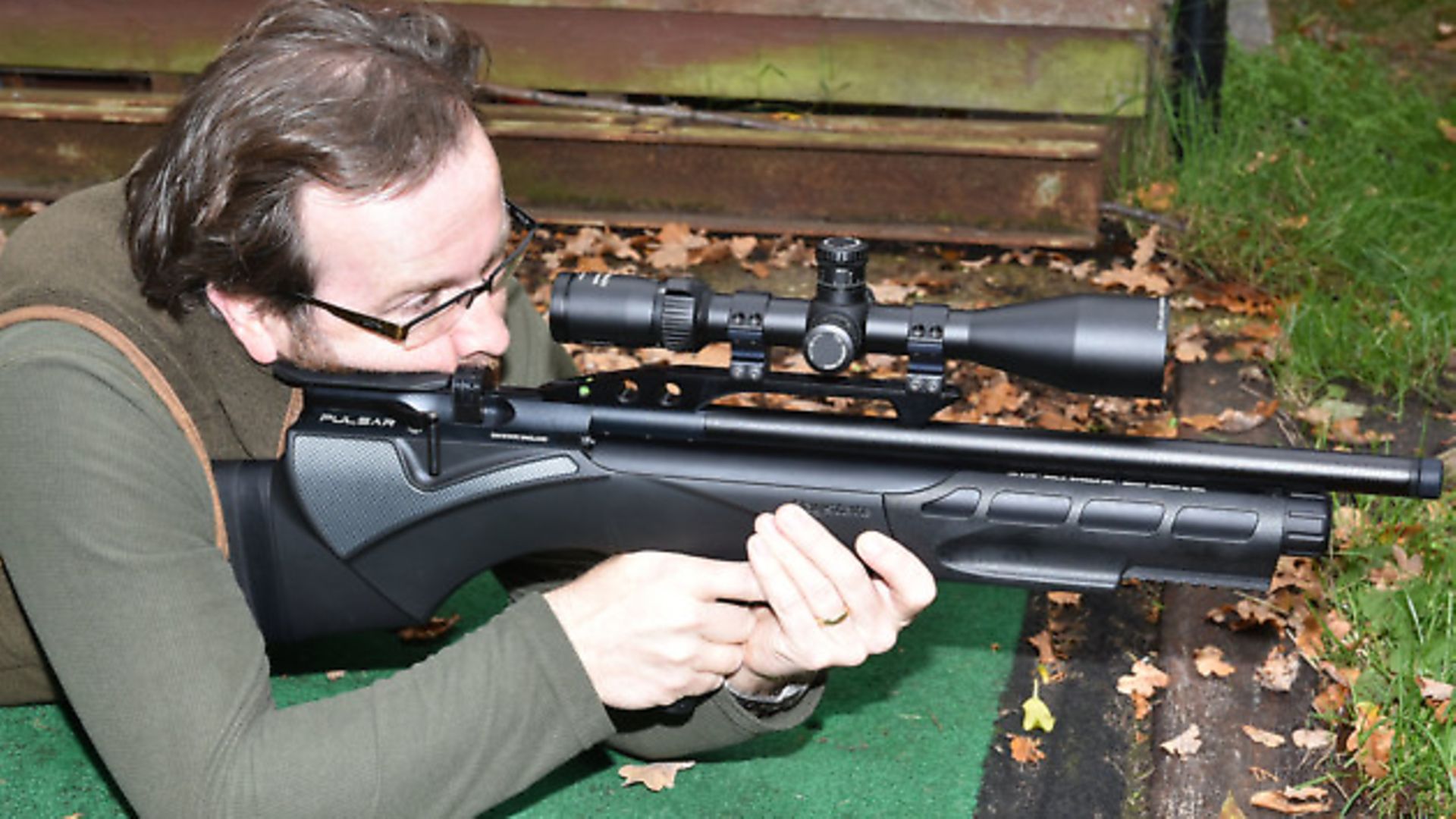 credit: Archant
credit: Archant
Specifications:
Model: Pulsar
Manufacturer: Daystate
Country of Origin: UK/Italy
Price: £1595.00
Magazine: £50.00
Type: Pre-charged, multi-shot bullpup
Calibre: .177, 22
Cocking: Side lever
Loading: Rotary, 10-shot magazine, or single shot adaptor
Trigger: Two-stage adjustable unit
Stock Type: Synthetic ambidextrous sporter
Weight: 3.8kg (8lbs)
Length: 780mm (30ins)
Barrel: 430mm (17ins)
Fill Pressure: Varies. 200bat for test rifle
Shots per charge: 250 in .22, 220 in .177
Contact: Daystate - 01785 859122 - www.daystate.com/pulsar